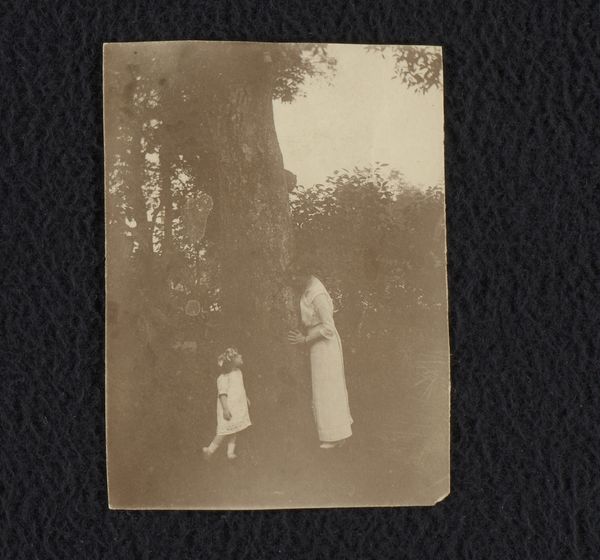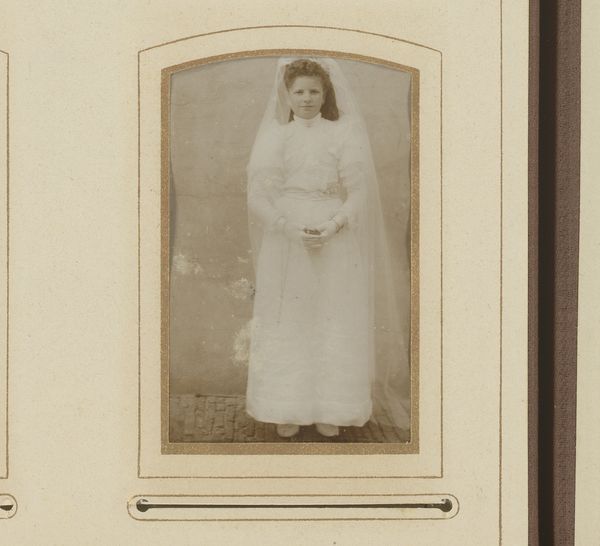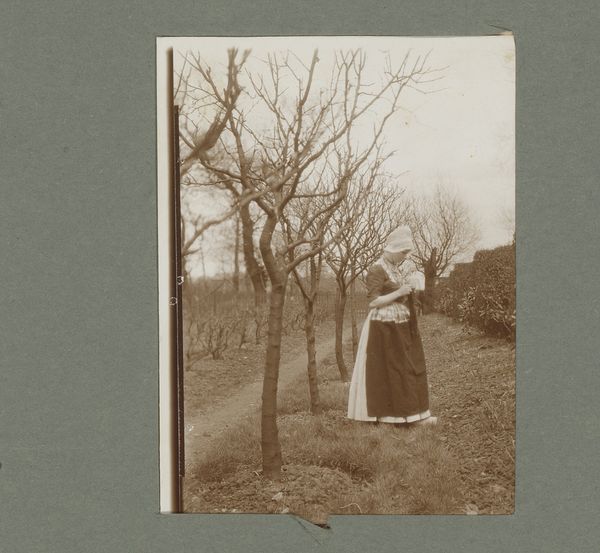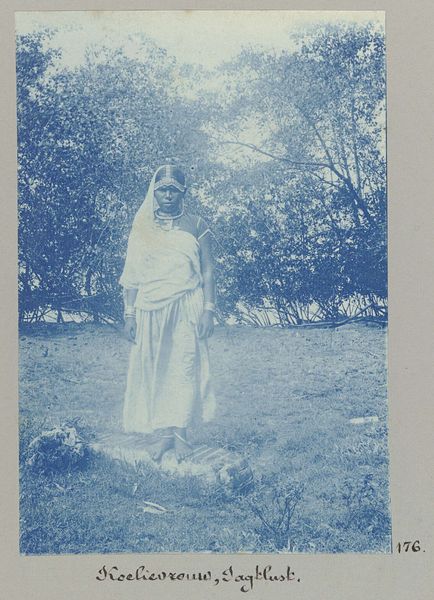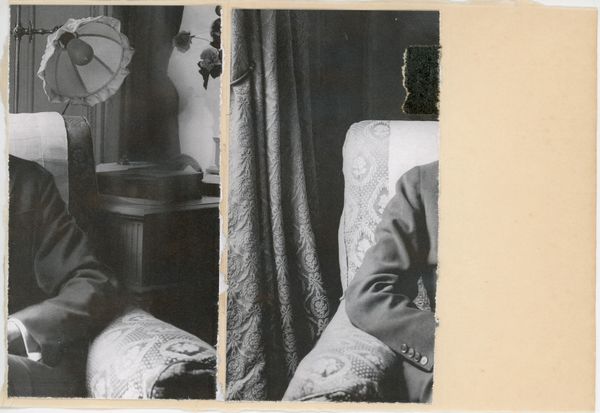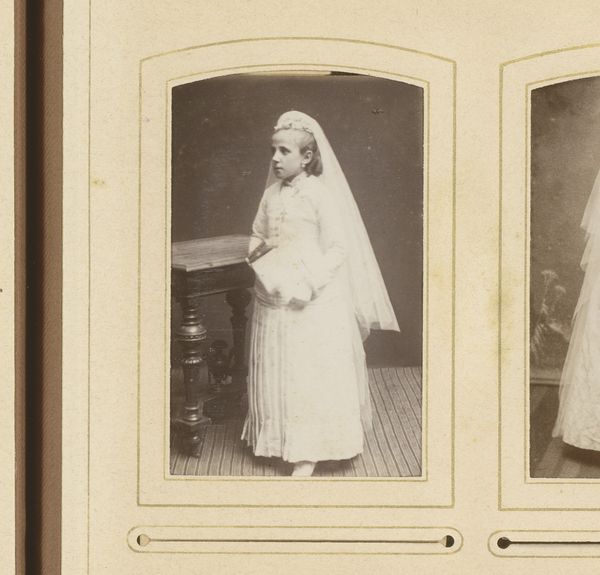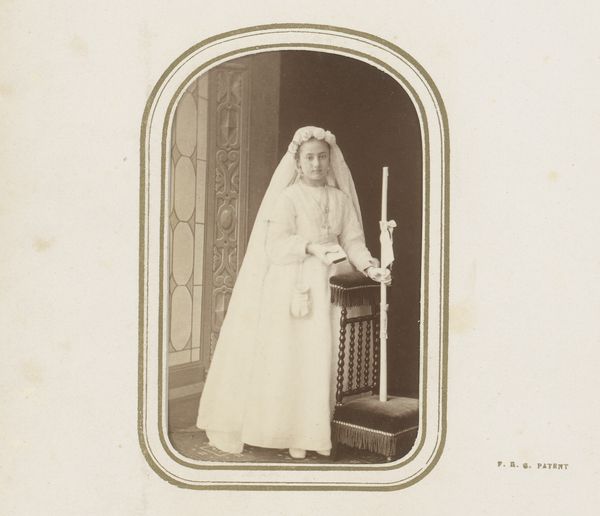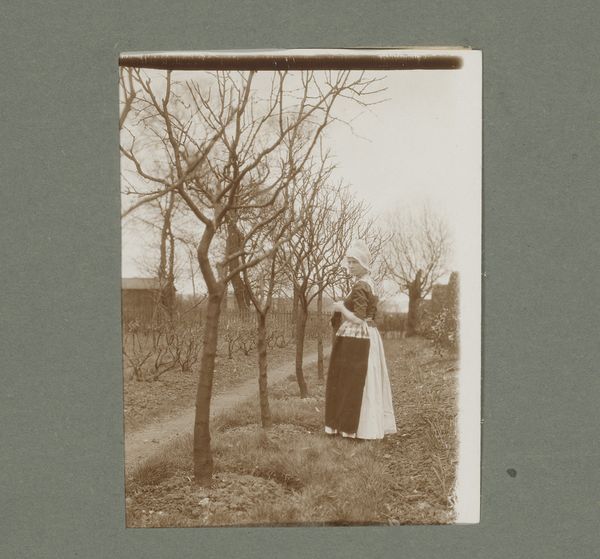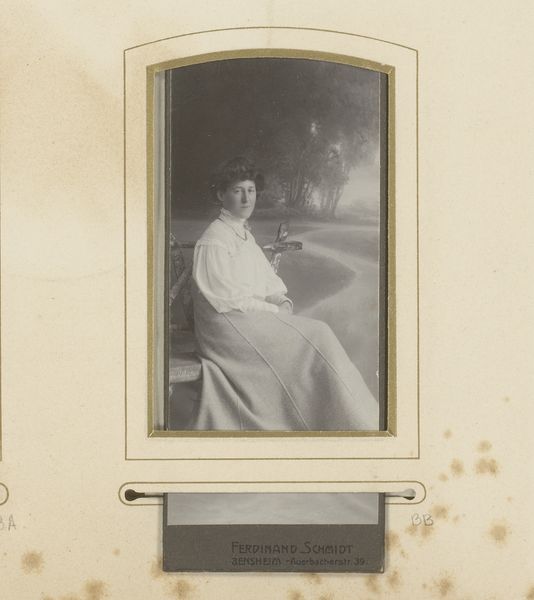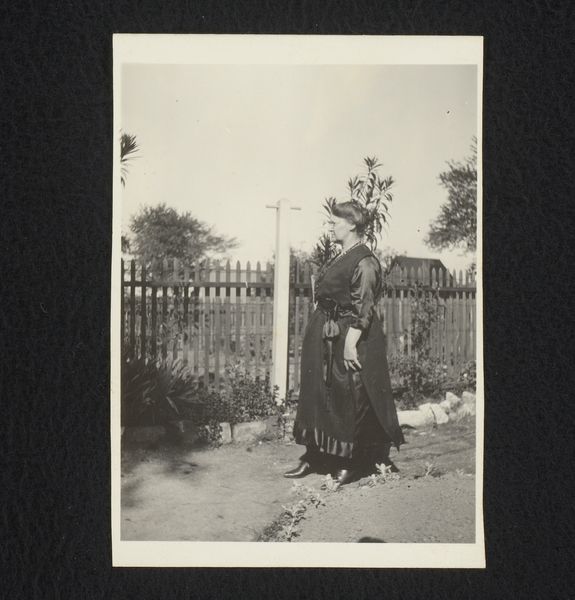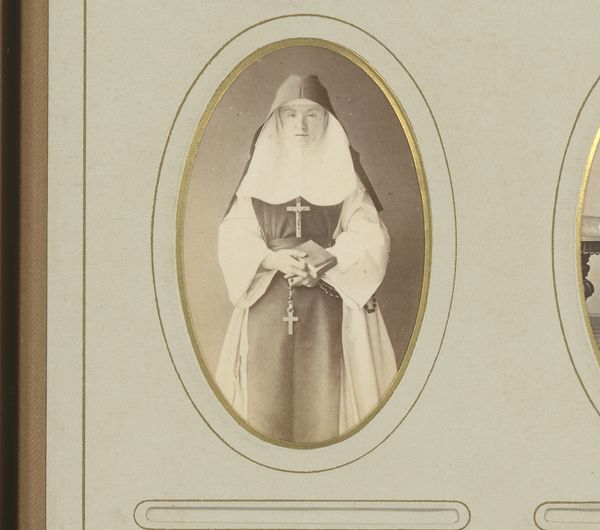
photography, gelatin-silver-print
#
portrait
#
photography
#
gelatin-silver-print
#
genre-painting
#
history-painting
#
realism
Dimensions: height 90 mm, width 62 mm
Copyright: Rijks Museum: Open Domain
Curator: My first impression is of the texture and light. The tones of the gelatin-silver print, the way they define form, especially in the girl's communion dress—it's palpable. Editor: Indeed, it's quite striking. What we have here is an anonymous photograph, likely taken in 1939, titled “Portret van Suzanne Andries bij haar eerste communie.” It captures a specific socio-cultural moment centered around a young girl's religious rite. Curator: Exactly, and the photographic process itself would have held a particular weight and value. Access to photography, especially for such personal milestones, speaks to social mobility and economic status in the late 1930s. It wasn't as democratized as it is now. The choice of gelatin-silver points towards a desire for durability and clarity. Editor: Considering the era, too, it invites reflection on broader anxieties. Think about 1939 – the brink of World War II. This innocent image then serves as a powerful counterpoint. It represents normalcy and faith in a world soon to be consumed by turmoil. A preservation of individual experience against the tides of history. Curator: Right. The context informs how we see it, of course, but consider how constructed the image is. Her pose, the pristine clothing, even the location—staged on her front steps, likely, it points toward a studied composition, and highlights not just faith, but family, respectability, performance. Editor: Certainly. This performative aspect speaks to the role of institutions. The church shapes the ritual, while the family stages and documents it for posterity. It becomes part of her family’s narrative, tied to beliefs, social standing, all framed by the camera's gaze. Curator: The family becomes both a site of production, creating memory, and consumption, both displaying and later re-examining the physical photograph as artifact. This humble photograph provides significant access into social values of the time. Editor: Absolutely, it offers layers upon layers for interpretation. I see in this image echoes of broader history – faith, family, war and photography as both record and social construct. Curator: Yes, that’s why I always come back to the image’s inherent materiality—the physical embodiment of time, memory, and circumstance all within that gelatin silver. Editor: And it reminds me how institutions, public images and private lives intertwine, constantly shaping and re-shaping our understanding of the world.
Comments
No comments
Be the first to comment and join the conversation on the ultimate creative platform.
